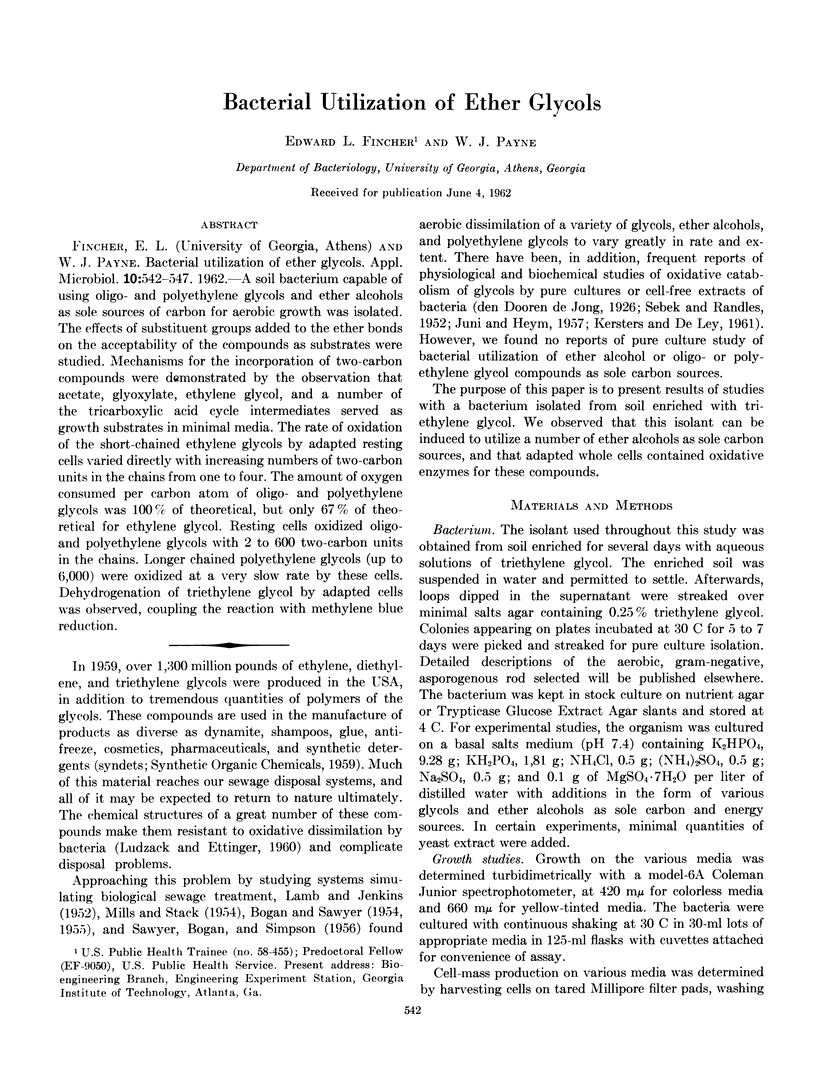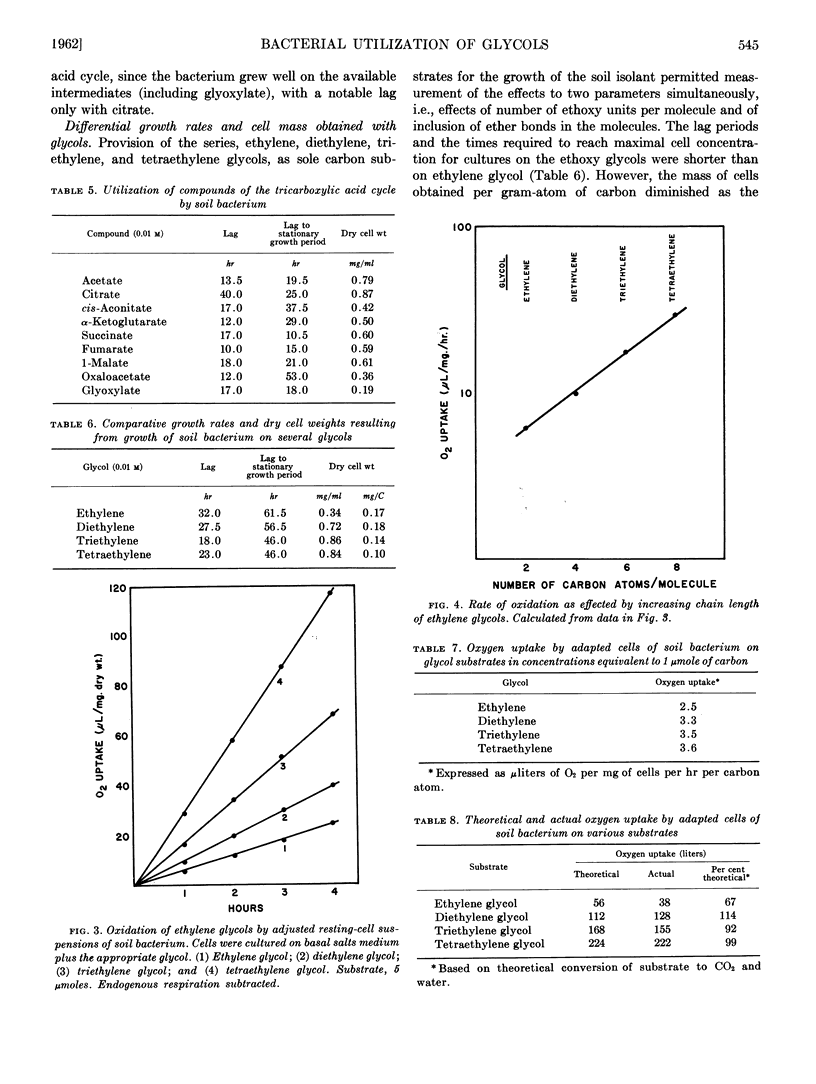Abstract
A soil bacterium capable of using oligo- and polyethylene glycols and ether alcohols as sole sources of carbon for aerobic growth was isolated. The effects of substituent groups added to the ether bonds on the acceptability of the compounds as substrates were studied. Mechanisms for the incorporation of two-carbon compounds were demonstrated by the observation that acetate, glyoxylate, ethylene glycol, and a number of the tricarboxylic acid cycle intermediates served as growth substrates in minimal media. The rate of oxidation of the short-chained ethylene glycols by adapted resting cells varied directly with increasing numbers of two-carbon units in the chains from one to four. The amount of oxygen consumed per carbon atom of oligo- and polyethylene glycols was 100% of theoretical, but only 67% of theoretical for ethylene glycol. Resting cells oxidized oligo- and polyethylene glycols with 2 to 600 two-carbon units in the chains. Longer chained polyethylene glycols (up to 6,000) were oxidized at a very slow rate by these cells. Dehydrogenation of triethylene glycol by adapted cells was observed, coupling the reaction with methylene blue reduction.
Full text
PDF





Selected References
These references are in PubMed. This may not be the complete list of references from this article.
- JUNI E., HEYM G. A. Cyclic pathway for the bacterial dissimilation of 2,3-butanediol, acetylmethylcarbinol, and diacetyl. III. A comparative study of 2,3-butanediol dehydrogenases from various microorganisms. J Bacteriol. 1957 Dec;74(6):757–767. doi: 10.1128/jb.74.6.757-767.1957. [DOI] [PMC free article] [PubMed] [Google Scholar]


